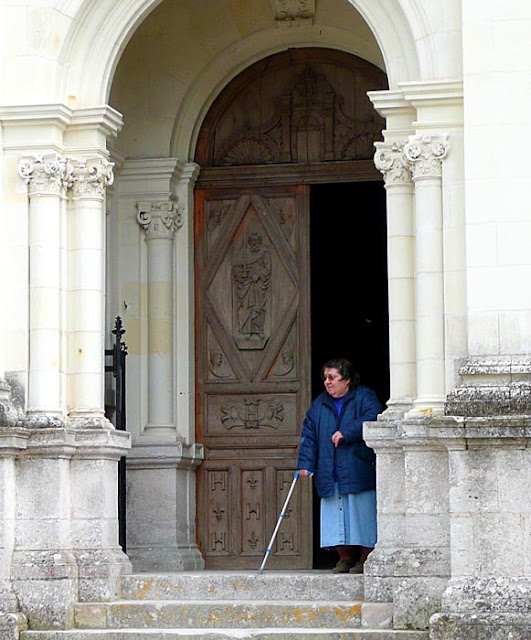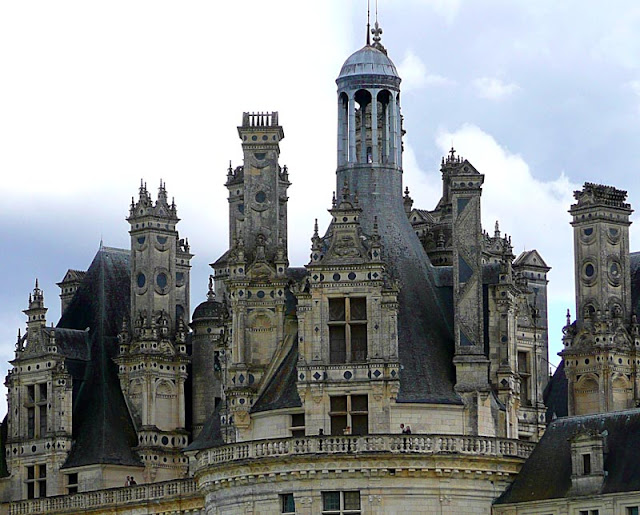Mondays are very quiet days in most French towns, and in small villages even more so. Everybody is resting up from the weekend, and a majority of the people who work in shops and markets on Saturdays and Sunday mornings take Monday off. Mennetou was like that — nearly deserted — on a recent Monday.
 Along with the blue forget-me-nots, these yellow flowers
Along with the blue forget-me-nots, these yellow flowerswere growing all around the town in pavement cracks
and wall grates, and even up old stone walls in places
Chrissou was suprised there was no good place to get a café crème. Well, there were two places to have coffee in Mennetou, or three if you count a snack bar down near the river. The snack bar was closed (maybe for the season; I didn't look to see if its hours were posted). On the main street — the highway — a little café-tabac was open. I know because I saw people going in and coming out with their newspapers.
The café-tabac wasn't very appealing because its big plate-glass windows seemed to be completely pasted over with posters, and its front door is right on the curb of the highway (even though you couldn't call it a busy road). A third place, a salon de thé that is part of a hotel/restaurant next to the town gate where there's a plaque commemorating Joan of Arc's 1429 visit, seemed to be shut for the day, but I'm not sure. We didn't really check.
That's small-town France on Mondays for you. Most everything is closed up tight.
 Looking down into the town's old well. You can just
Looking down into the town's old well. You can justsee me and my camera in the little spot of
reflected light at the bottom of the picture.
Fewer than a thousand people live in Mennetou-sur-Cher. On a Monday, very few of them are out on the streets, that's for sure.

















































